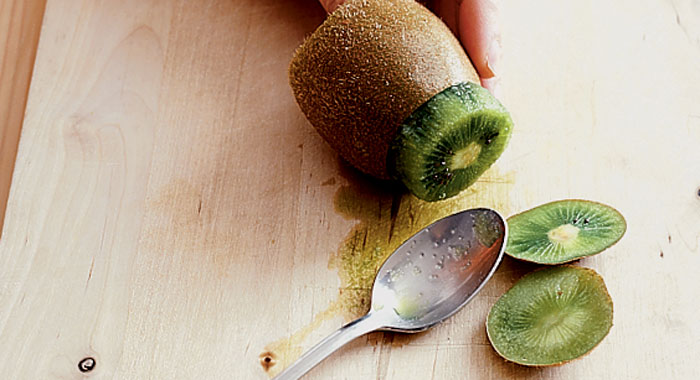
Pronounce it: kee-wee froot
The brown and hairy exterior of this egg-shaped fruit doesn’t look promising, but inside it’s a different story – sweet, yielding, bright green flesh, prettily dotted with black seeds.
The flavour is distinctive but hard to pin down – some say it’s like strawberry, others say pineapple. Its named after the bird of the same name from Zealand, where it’s also grown, though its other name, Chinese gooseberry, reflects its original country of origin.
Very high in vitamin C, kiwi fruit is far better eaten raw – cooking it destroys the vitamin content and the green colour. The enzymes it contains makes it good for tenderising meat, but they’ll also cause milk to curdle and will prevent gelatine and aspic from setting, so don’t attempt kiwi ice cream or jelly.
Availability
All year round.
Choose the best
Go for firm fruit that gives slightly when gently squeezed. Avoid wrinkled and bruised fruit.
Prepare it
Peel off the skin with a knife or vegetable peeler, then chop or slice. Alternatively, to eat it as a snack, cut in half and scoop out the flesh with a teaspoon.
Store it
If ripe, keep in the fridge – they’ll last around at week. If under-ripe, keep at room temperature.
Cook it
Try kiwi fruit sliced and used in puddings such as pavlova; blended in a smoothie; used as a rub or in a marinade for meat or squid.
Be the first to comment on "Kiwi fruit"